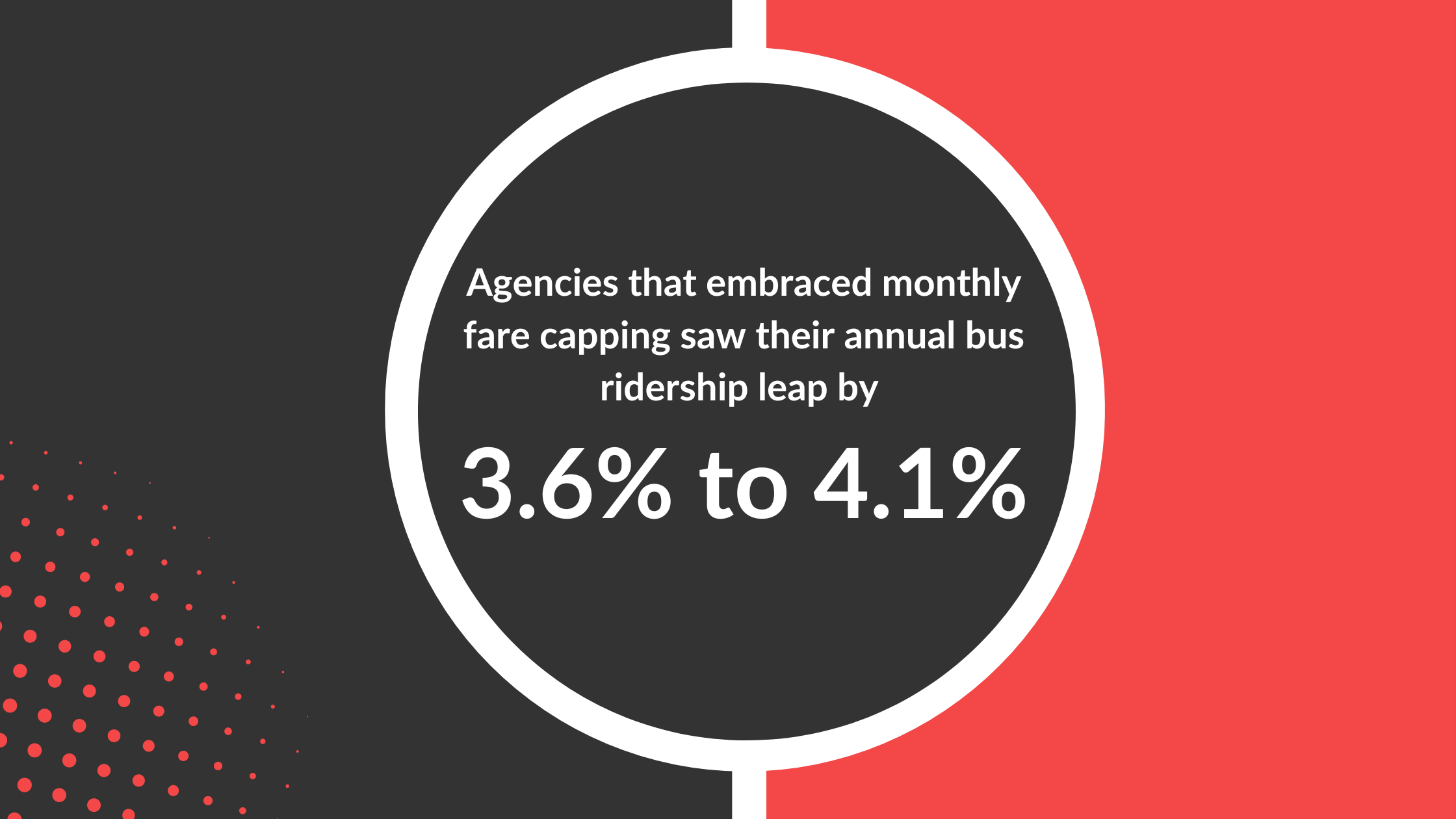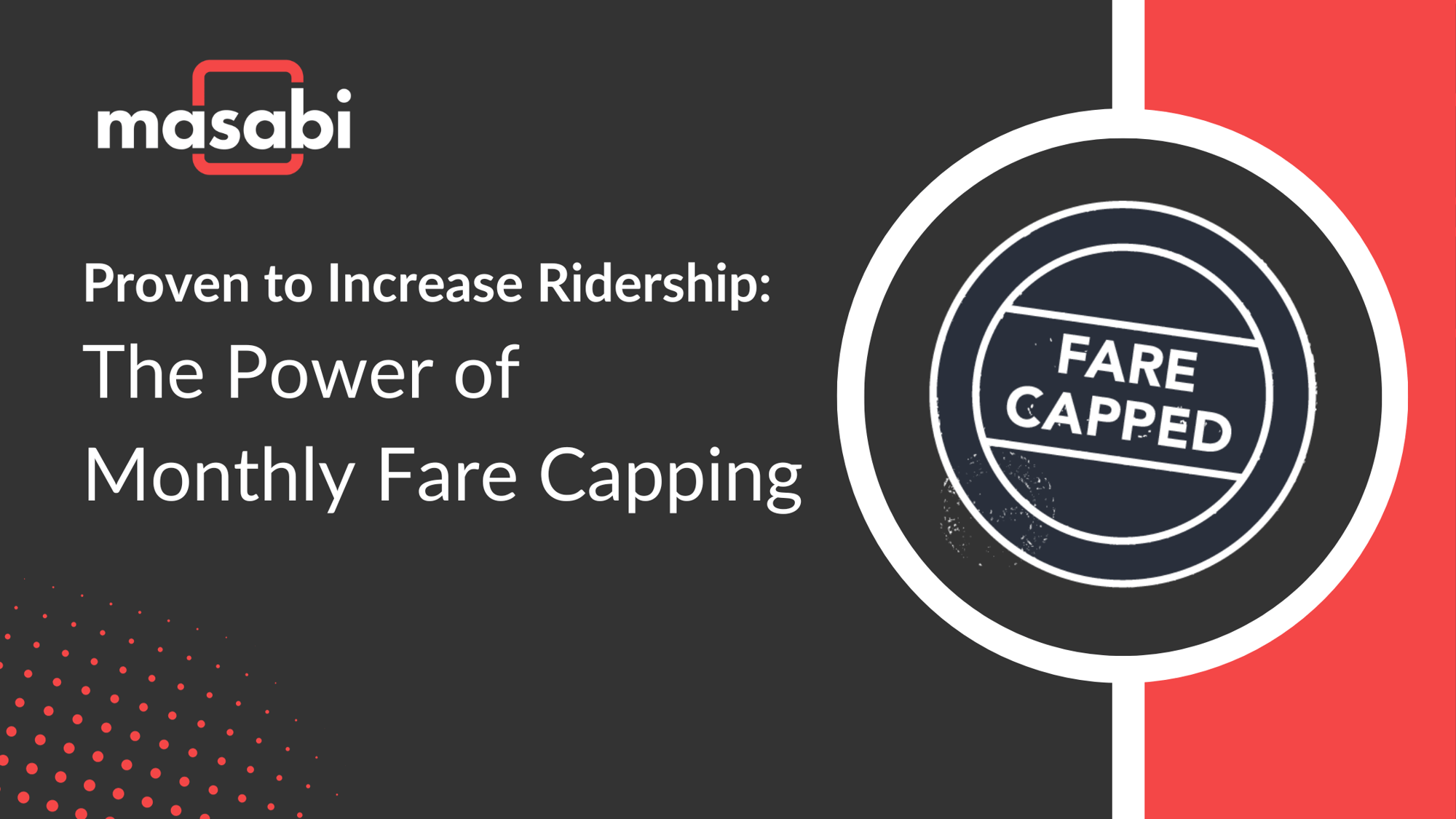In a recent report called ‘The app or the cap?’, published in the journal Transport Policy, researchers at the University of Tennessee examined how new fare technology and fare policies affect overall ridership numbers for transit agencies in the US.
The results were clear with every US transit agency studied in the report experiencing an increase in ridership when they expanded their fare-capping options to include monthly passes by between 3.6% - 4.1%.
Let’s delve deeper into the concept of fare capping and explore the key findings from the report.
What is Fare Capping?
Think of fare capping as your financial safety net in public transit. It's a smart way to ensure you never overspend on your daily, weekly or monthly journeys. Once you hit your fare cap, every trip thereafter is on the house until the cap resets or upgrades to the next cap level (Daily Cap to a Weekly Cap). It's like having an unlimited pass, but you only pay for what you use, up to a certain limit.
Fare capping is not just a buzzword; it's a meaningful solution with tangible benefits. It democratizes access to transit, particularly benefiting those who might struggle to pay the upfront cost of a weekly or monthly pass. By capping fares, public transit becomes a more equitable and manageable expense. Plus, it takes the guesswork out of travel expenses, offering a more streamlined and stress-free experience for all riders.

(The chart above shows how the purchase of passes on a daily basis (based on the number or location or taps and scans when boarding, or boarding and exiting a mode of transit) contributes to earning a period pass. Once a pass is earned the remaining trips for that pass period are then free.)
For more information on fare capping please read this blog.
The Study: Scope and Timeline
A groundbreaking study led by Abubakr Ziedan and his team at the University of Tennessee analyzed the effects of fare capping on bus ridership. The study covered the 50 largest transit agencies across the U.S. and spanned several years up to 2019 (2012-2019). Twenty-two agencies adopted daily fare-capping in that time, and three adopted monthly fare-capping.
Controlling for other variables like service quality at individual agencies, fluctuating gas prices and the rise of ride-sharing services, the researchers sought to isolate the effects of fare-capping policies on ridership.
The study paints a comprehensive picture of fare capping's impact across a diverse urban landscape. It underscores a growing trend among agencies to deploy fare capping alongside Account-Based Ticketing. This combination promotes equity for riders, revolutionizes convenience, and adapts to the increasingly flexible patterns emerging post-Covid.

Fare Capping: Key Insights from the Study
Now, let's talk numbers and insights. The study was very revealing. Agencies that embraced monthly fare capping saw their annual bus ridership leap by 3.6% to 4.1%.
This wasn't a one-off; it was a consistent trend across the board for those implementing fare capping that included monthly capping. These numbers are really significant and prove that deploying an Account-Based Ticketing system with Fare Capping implemented across all fare types can significantly help increase ridership.
The impact of monthly fare capping on ridership grew over time, the longer the system was in place, suggesting a potential for even greater increase in ridership in the future.
On the flip side, daily fare capping didn't quite stir the same excitement. Why? Daily caps cater to short-term needs. They're great for a day out or an impromptu trip, but they don't necessarily encourage more regular riders to travel more. Thus, their impact on the larger ridership picture is less impactful.
This outcome is somewhat expected. as daily passes provide less friction and appeal to different rider personas such as tourists. On the other hand, monthly passes impact regular riders who benefit the most from ‘free’ rides earned in a fare-capping system.
What This Means for the Future of Transit
These findings are more than just statistics; they're practical guidance for transit agencies. For those aiming to boost ridership while championing fairer fare policies, introducing monthly fare capping stands out as a key strategy. This approach not only supports equitable access but also drives up ridership numbers.
Wrapping Up: The Big Picture
In a world increasingly reliant on public transit, the study's message is loud and clear: embracing monthly fare capping is more than a policy change; it's a commitment to better, fairer, and more efficient urban mobility.
With monthly capping, transit agencies have the power to revolutionize the way we think about and use public transit. The future looks promising, and it's capped just right!
Fare Capping: How to Get Started
Embarking on the journey of implementing fare capping in your transit system can seem daunting, but Masabi's Account-Based Ticketing platform streamlines this process.
- Proven Track Record: Our experience speaks for itself. We've successfully launched fare capping with a range of agencies, including RTD in Denver, COTA, Laketran, Akron Metro, Mountain Metro in Colorado Springs, PARTA, RTC in Las Vegas, RTS in Rochester, GDRTA in Dayton, and many more. These collaborations have equipped us with the expertise to handle diverse needs and challenges.
- Understanding Account-Based Ticketing: At Masabi, we offer an innovative Account-Based Ticketing (ABT) platform, a key element in deploying a fare-capping solution. ABT moves the point of calculation away from the physical ticketing hardware and into the cloud, simplifying the process significantly.
- Deploying a Versatile Solution: Our platform supports various fare media, including smart cards, open payments (like contactless credit/debit cards), a user-friendly mobile ticketing app and 3rd-party mobility apps. This comprehensive approach ensures accessibility and convenience for all types of riders.
- Cost-Effective Fare Payment Solutions: As a Fare Payments-as-a-Service platform, Masabi offers a solution that's 40-70% less expensive than traditional models. This cost-effectiveness is crucial for agencies looking to implement advanced fare systems without the hefty price tag.
- Quick and Easy Launch: Time is of the essence in public transit. Our platform is designed for rapid deployment, meaning agencies can roll out their fare-capping system much quicker than with traditional setups.
- Constant Updates and Innovations: The world of transit is always evolving, and so are we. Agencies partnering with Masabi receive continuous updates, ensuring their systems stay at the forefront of technology and user experience.
Agencies interested in starting their fare-capping journey can reach out to our team. We offer free consultations to discuss specific requirements and challenges, creating tailored solutions that align with the agency's goals and budget.
With Masabi, fare capping becomes more than just a concept; it transforms into a practical, efficient, and cost-effective reality that enhances the rider experience and helps agencies adapt to the fast-paced world of public transit.
Further reading:
- Blog: Fare Capping: what is it and how does it work?
- Fair fares for everyone: how Account-Based Ticketing and fare capping deliver fare equity


